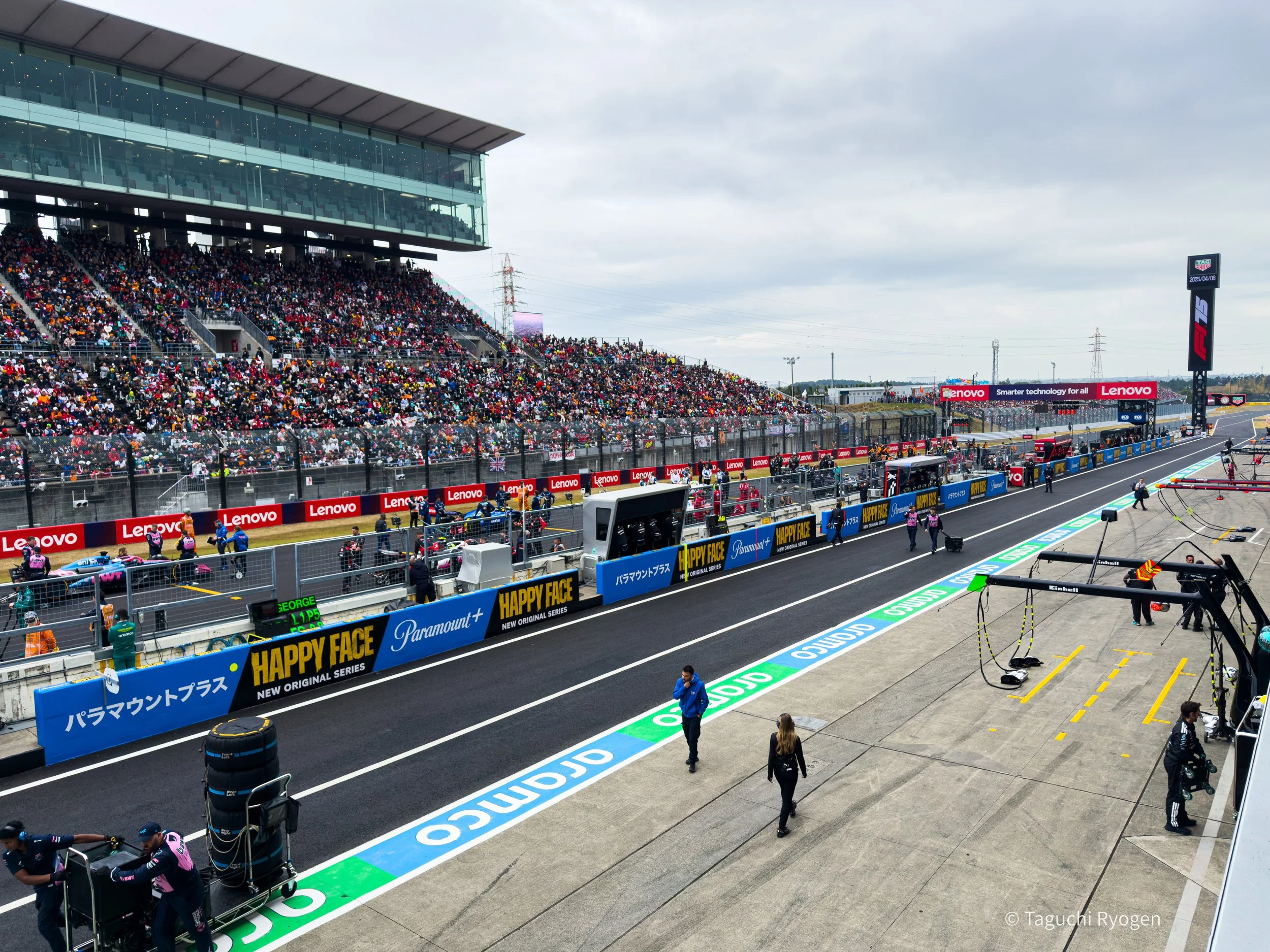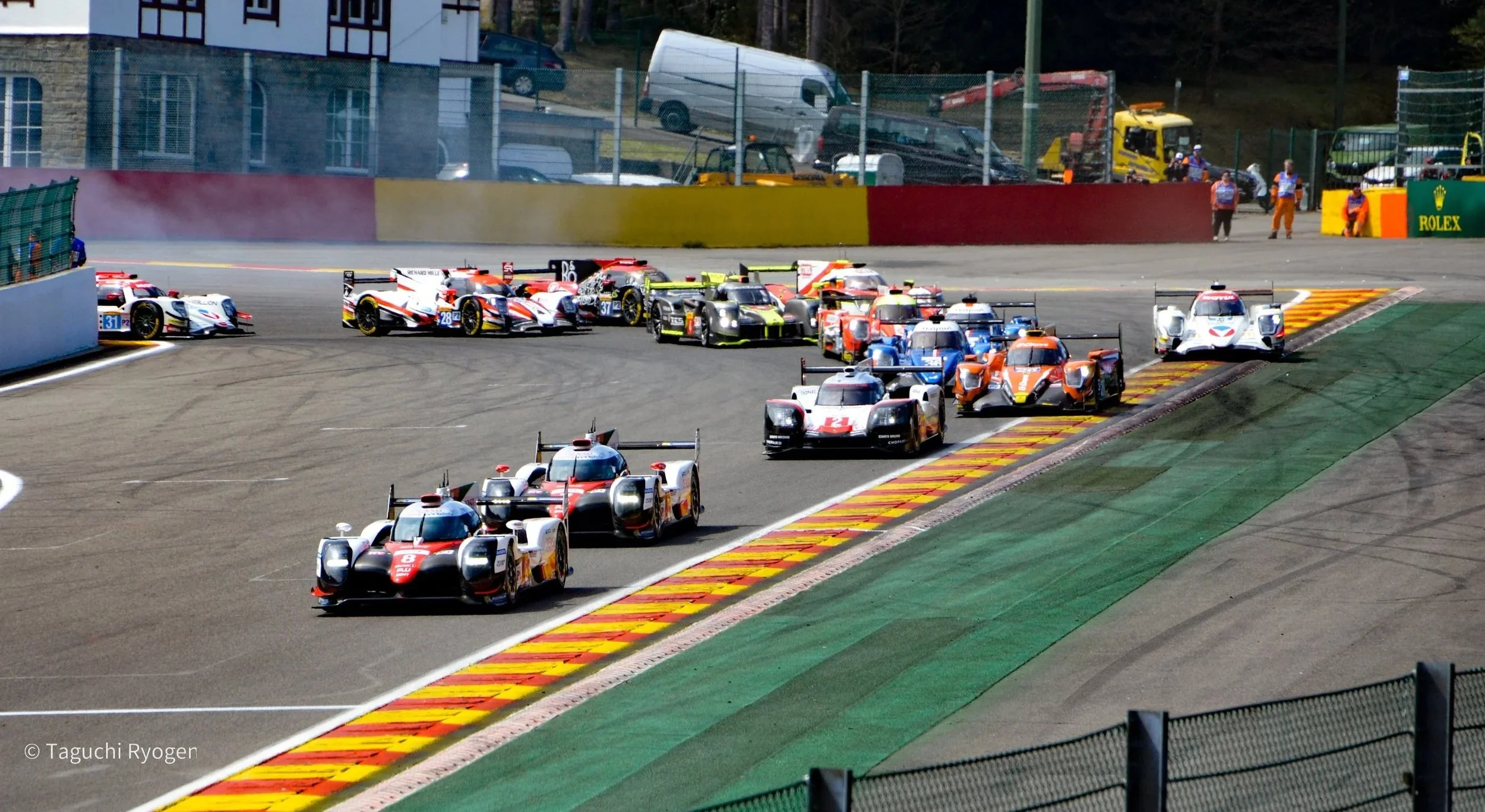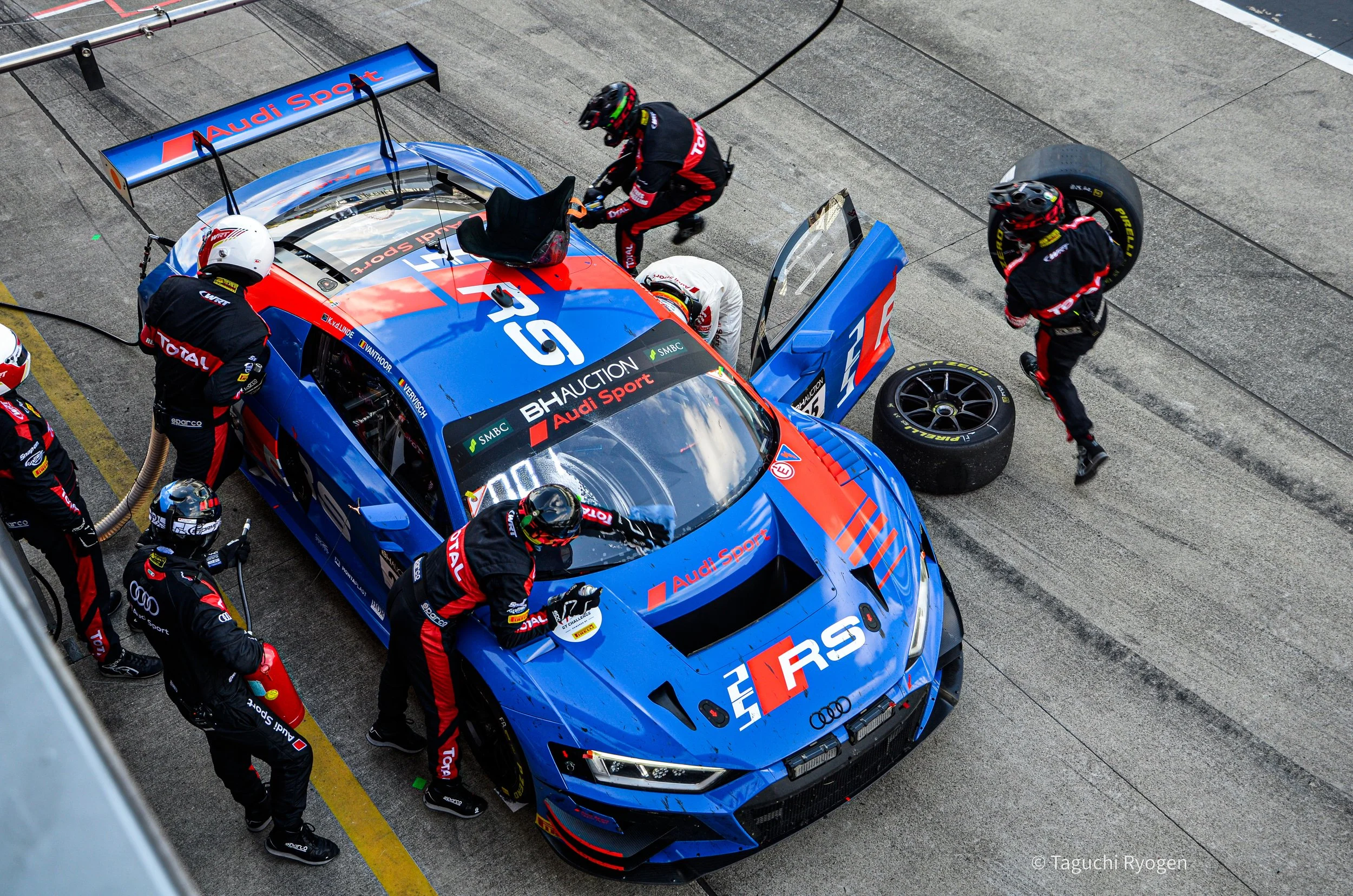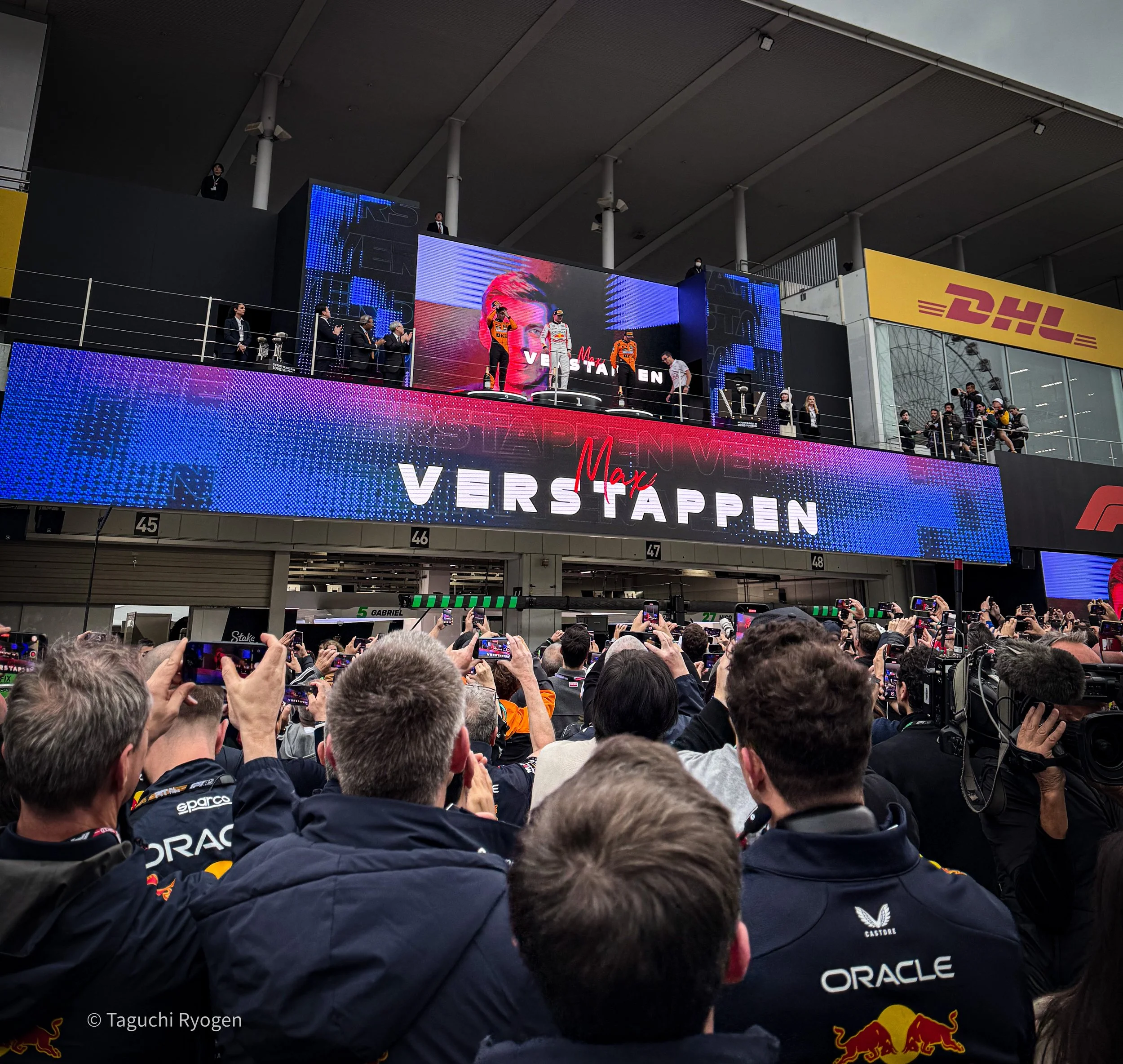Motorsport vs Corporate
Formula 1 (F1) 2025 Japanese Grand Prix
Whenever people see my CV, it usually sparks a mix of surprise and curiosity.
“You’ve got a really interesting background.” Or, “I’ve never met someone who worked in motorsport.” Sometimes it’s even, “I watch the Netflix show!” (thank you Drive to Survive).
It makes sense. Motorsport and the corporate world appear to be completely different universes. One fueled by adrenaline and split-second calls, the other by PowerPoint and quarterly reviews. But having lived in both, I’ve realized that the lessons from the track translate directly into business.
Here are some of the key differences, from the perspective of someone who has experienced both.
Time & Pace
Personally, the biggest difference between motorsport and the business world is how time flows.
Say, what would you do with 10 minutes?
In business, 10 minutes barely registers. Maybe you reply to a few emails, maybe a meeting runs over. No big deal, just another day in the office. But you’re probably not making a business-critical decision in those 10 minutes.
In motorsport, 10 minutes is a lifetime. With 10 minutes left in practice, mechanics are rushing to complete a final setup change, engineers are scrambling to get the car back out, and the driver is pushing through a couple of fast laps to collect precious data and feedback. In a race, 10 minutes can mean a sunny track turning wet, strategy flipped upside down, and a leader suddenly finding themselves out of contention, or even retired.
All of this effort, all of this intensity, for perhaps an improvement of just half a second in lap time.
What’s half a second, you might ask?
In qualifying, 0.5 seconds can be the difference between starting 10th or starting on pole. In a race, it can decide whether you emerge from the pits ahead of your rival or get stuck behind them in dirty air for the rest of the stint.
In business, we rarely think in increments that small. Usually you’re working on the scale of days, weeks, months, or even years, and rarely would half a second make or break the outcome.
Lesson: Motorsport hardwires you to treat fractions of time as decisive. Business may move slower, but urgency and timing still separate leaders from followers.
2017 FIA World Endurance Championship (WEC) 6 Hours of Spa-Francorchamps race start
Decision-Making
We’ve already covered how time is of the essence, but in motorsport you often only have seconds to make decisions.
Do you pit now or stay out another lap? Do you risk slick (dry) tires as the track begins to dry, or play it safe on intermediates? Do you short fuel to get ahead? These choices come at you in real time, with imperfect information, and once made, there’s no turning back. A few seconds of hesitation can mean the difference between winning the race vs being outside of points.
In business, decision-making happens on a very different clock. Weeks of analysis, multiple meetings, layers of approvals and sign-offs. The luxury of time allows for deeper consideration, but it also creates a dangerous trap: indecision. By the time a decision finally lands, the opportunity may have already passed, and competitors have moved ahead.
Lesson: Motorsport proves that indecision is often more costly than a wrong decision. You don’t need to make boardroom calls at pit-wall speed, but decisiveness is what turns timing into an advantage.
Feedback Loop
So we’ve covered time and decision-making. The result of both being so quick is the feedback loop.
In motorsport, when you make a decision, whether to pit, what setup tweak to try, or which tire to fit, you see the outcome almost immediately. The lap time, sector splits, data, driver feedback… everything gives you real-time evidence of whether your call worked or failed. There’s no ambiguity: you either gained time or you lost it.
That immediacy forces constant iteration. You adjust, try again, calibrate, and react, often within the same session or stint. The feedback loop is short, brutal, and constantly sharpening your sense of what works.
In business, feedback loops are rarely that sharp. You launch a product, roll out a feature, or change strategy, but it might take weeks, months, or even years to see meaningful results. Sales, user adoption, market feedback, they often lag. That delay gives room for doubt, second-guessing, and inertia.
Lesson: The faster the feedback, the faster the learning. Striving to close the gap between action and results is the real competitive edge.
Teamwork & Alignment
Motorsport is the ultimate team sport. A driver might take the spotlight, but success depends on mechanics, engineers, strategists, and many other specialists working as one. And because time is compressed, the way teams communicate is high context.
On the radio, you don’t hear long sentences. Just a few words, and everyone knows what they mean. A call like “Box, box” instantly triggers the pit crew into action: mechanics prepare the tires and position themselves, engineers signal the refueling time, and the driver stops the car with precision. There’s no need to explain in detail because the context is already shared and deeply ingrained. (Of course, there’s always a pre-race briefing to cover strategy permutations, but once the lights go out, it’s mostly shorthand.)
In business, teamwork often works the opposite way. Communication tends to be low context: pulling together parties with varying levels of investment, building long decks, endless back-and-forth emails, alignment meetings, repeated clarifications. The slower pace allows for this, but it also reflects the reality that many teams operate in silos and don’t share the same mental model.
Motorsport shows that when context is shared, collaboration becomes second nature, and speed follows.
Lesson: High-performing teams don’t just share goals, they share context. The closer business teams get to a paddock-style “common language,” the faster and more fluid their execution becomes.
W Racing Team (WRT) pit crew working on Audi R8 LMS GT3 car at 2019 Suzuka 10 Hours race
Risk Appetite
Motorsport lives on the edge. To win, you have to take risks. A driver braking later into a corner, a strategist gambling on an undercut, or a team rolling the dice on tire choice when the weather turns. Sometimes the risk pays off with victory; sometimes it ends in retirement. But without risk, you don’t even stand a chance.
Take short-fueling, for example. During a race stint, a team might deliberately load less fuel to make the car lighter and faster especially if safety car is anticipated. The upside? Better lap times and potential track position. The downside? If the race unfolds differently than expected, you could be forced into an unplanned stop, or even risk running out of fuel without a safety car. It’s a calculated gamble, but often, those gambles are what win races.
In business, the mindset is usually the opposite. Companies are built to protect themselves from risk: long approval chains, detailed forecasts, pilot programs, risk committees. The focus is on avoiding mistakes rather than chasing breakthroughs. That makes sense for stability, but it often stifles innovation and slows progress.
The truth is, both worlds need balance. Motorsport teams take calculated risks, pushing the limit, but with data, preparation, and contingencies in place. Businesses can learn from that. It’s not about recklessness, it’s about identifying where the upside outweighs the downside, and then moving with conviction.
Lesson: In racing, you can’t win without taking risks. In business, you can’t grow without them either, the key is making them calculated.
Metrics & Measurement
One of the things that bothers me the most about the business world revolves around Key Performance Indicators (KPIs). Too often, they miss the essence of what really matters.
Take sales targets, for example. I’ve seen account managers throttle their efforts so they don’t exceed targets too early, because doing so only makes their life harder the next year when their quota gets raised. I’ve also seen salespeople pitch something just to hit a price point or tick a KPI box, not because it was the right solution for the client. In both cases, short-term numbers win out, while long-term relationships and real value creation get overlooked.
Too many KPIs I see and hear about are vanity metrics, proxies, or political compromises. They look neat in a dashboard or a quarterly report, but they don’t necessarily reflect true performance or progress.
In motorsport, there’s no such ambiguity. The metric is clear and uncompromising: the lap time. You’re either faster or you’re not. No amount of narrative can spin a bad lap into a good one. As Toto Wolff says, “the stopwatch never lies.” That clarity keeps teams focused on what really matters: speed, reliability, and results.
Lesson: Business needs fewer KPIs that look good on slides, and more “stopwatches”, metrics that are simple, honest, and tied directly to real outcomes.
Podium celebration at Formula 1 (F1) 2025 Japanese Grand Prix
Culture & Energy
Having experienced motorsport and now corporate culture myself, the highs and lows of motorsport, and all the emotions that come with it, is something you won’t find in corporate life.
Motorsport has an intensity that’s hard to replicate elsewhere. Wins and losses are shared in real time. You can feel it in the garage when a strategy pays off, or when an engine lets go just laps from the finish. The whole team rides the highs and lows together, because everything they’ve worked for has led to that single result. The energy is raw, emotional, and unfiltered.
Corporate life couldn’t be more different. Success and failure are diluted across quarters, spread across teams, or buried in reports. A big client win gets wrapped into a presentation deck; a missed target turns into drawn-out reviews or quiet politics. The raw energy isn’t there, which makes it harder to rally people around a shared mission.
That doesn’t mean business can’t capture some of that paddock energy. Motorsport proves that when a team feels directly connected to outcomes, motivation and accountability rise together. Everyone knows their role, and everyone shares the result.
Lesson: Culture is built in the moments you win and lose together. Motorsport lives this every weekend. Businesses that can replicate even a fraction of that shared ownership will move faster, with more energy and alignment.
Closing
Motorsport and business may run on different clocks, but the fundamentals are the same: clarity of purpose, decisiveness under pressure, fast feedback, teamwork, smart risk-taking, meaningful metrics, and a culture that unites people around shared outcomes.
On the track, a tenth of a second can separate victory from defeat. In the boardroom, it might be a quarter, a product cycle, or a deal window. The scale is different, but the principle is the same.
The stopwatch never lies. The only question is whether you’re moving fast enough, and in the right direction.



